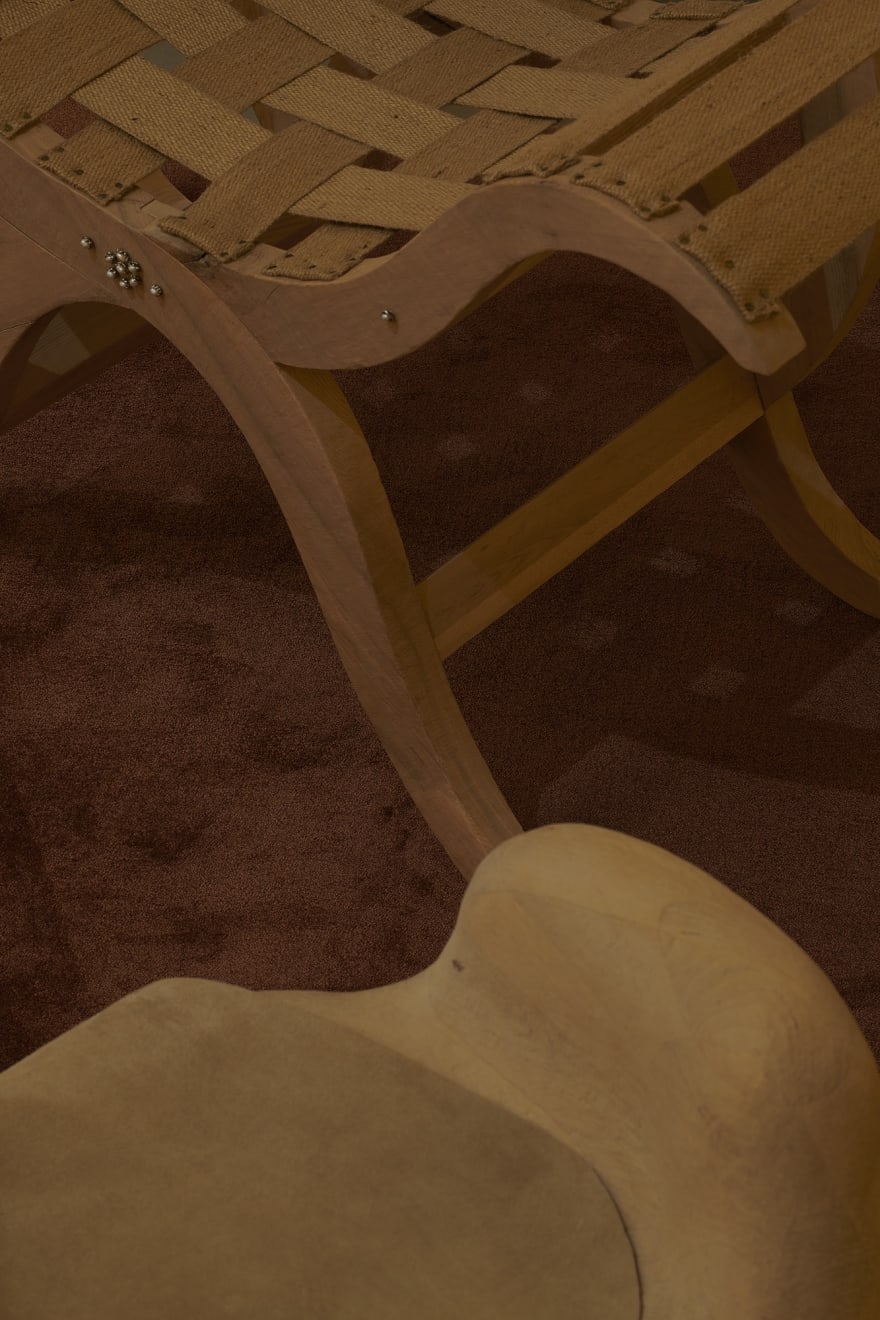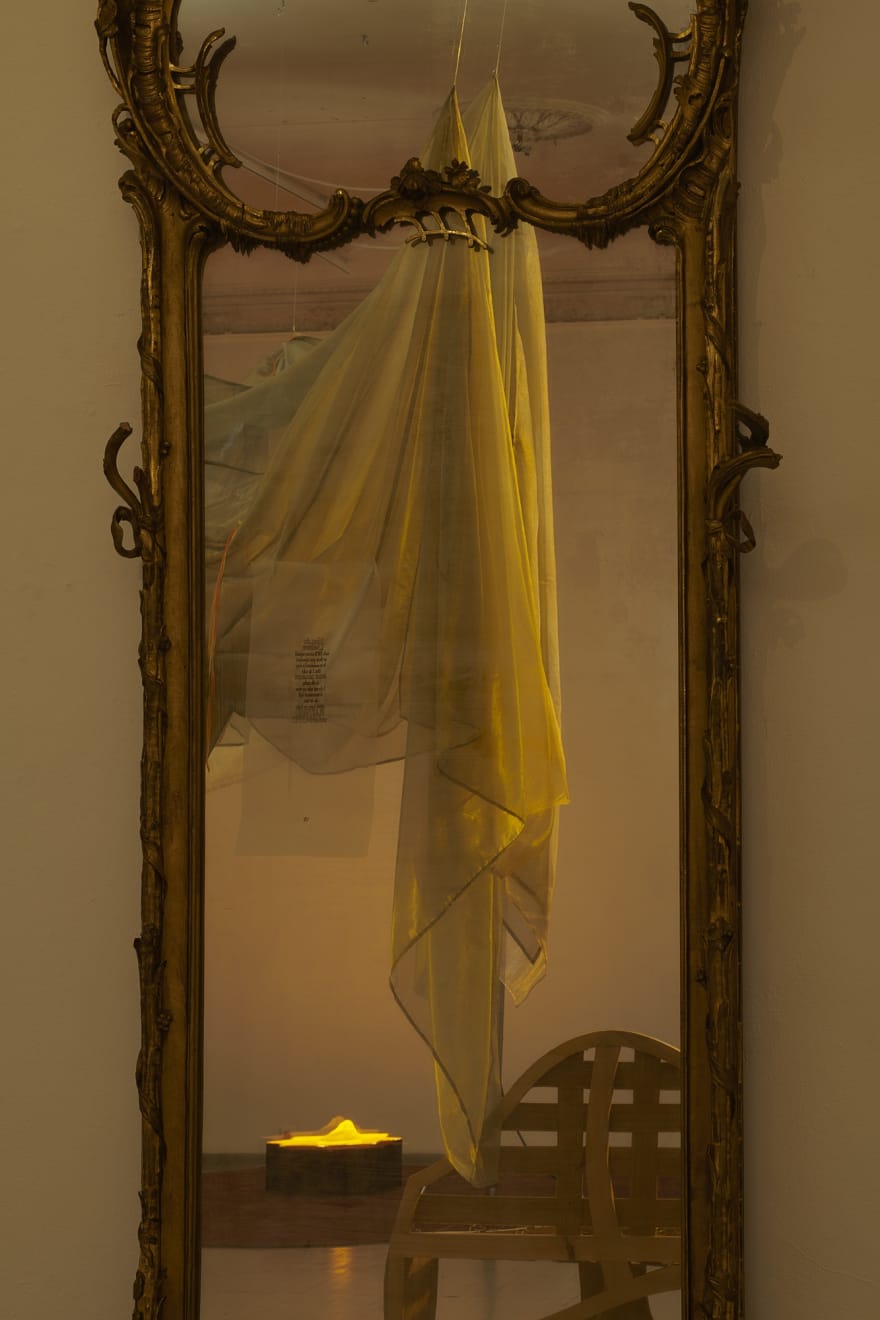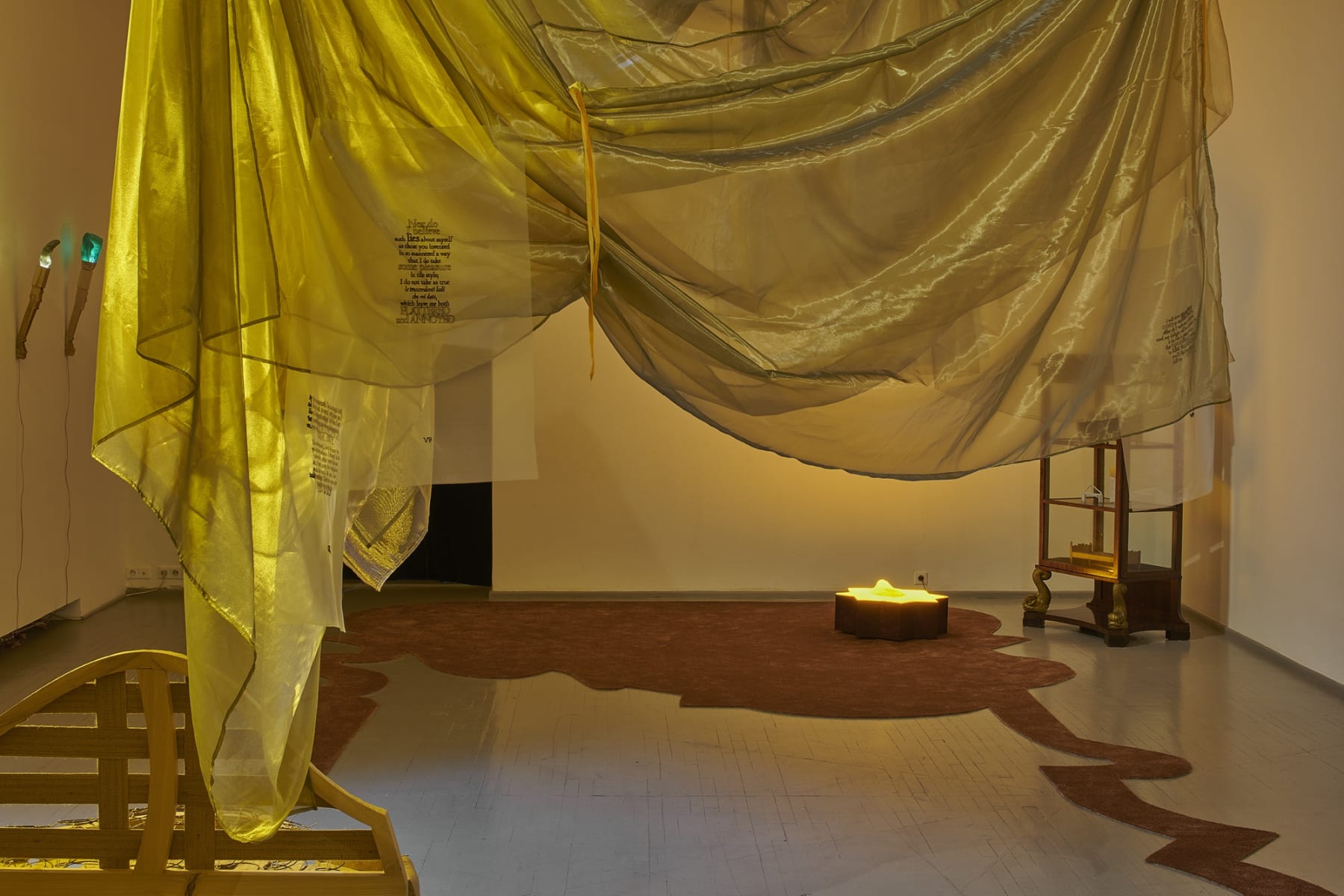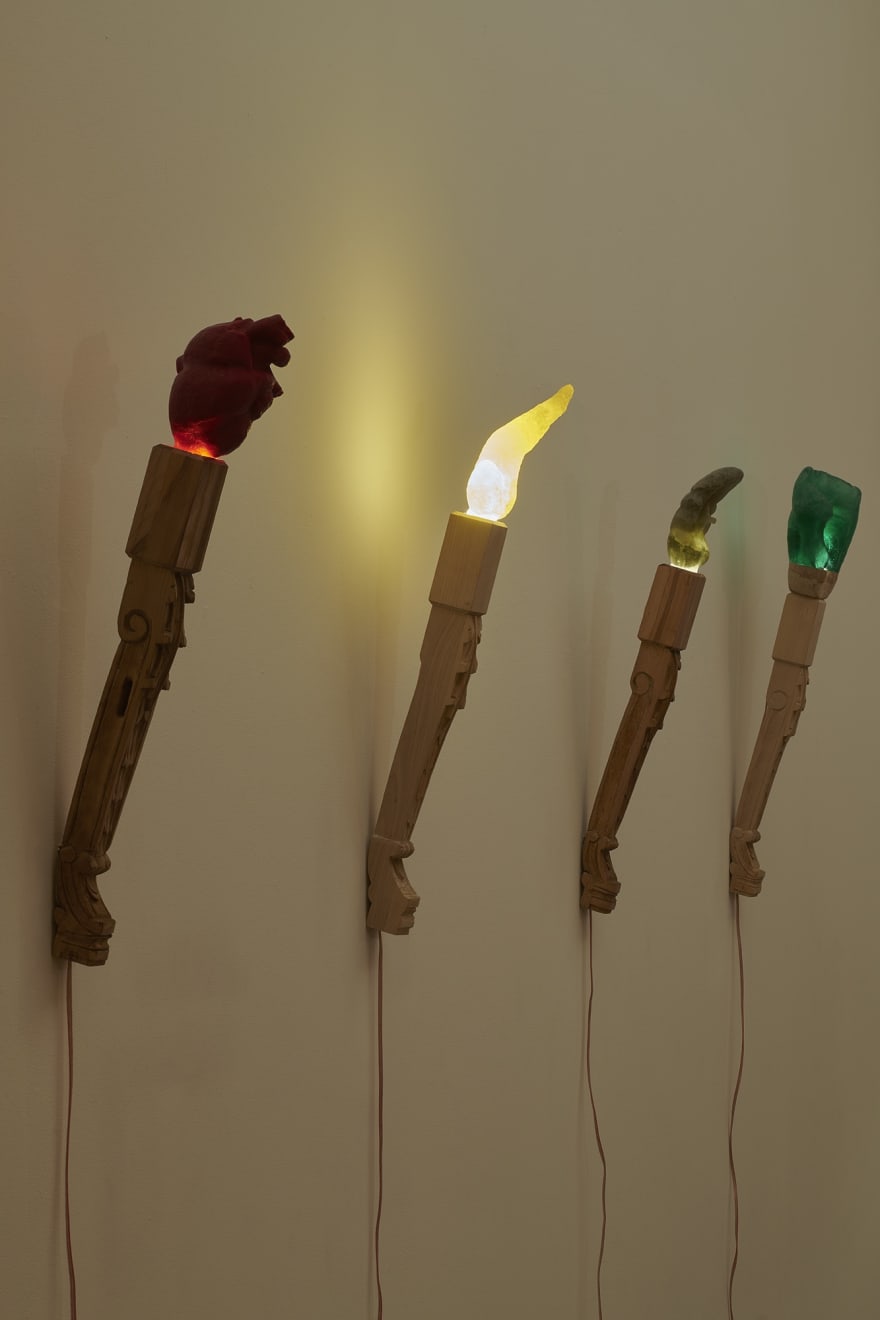Goda Palekaitė | Marija Puipaitė: 'Anatomy of the Fetish'
The mysterious Sphinx, half-woman, half-lion, arouses desire. Fetish is where the secret joins the strange, and their encounter becomes ambivalent - the sphinx we nourish secretly at our core. Karl Marx had a theory of fetish as a socioeconomic hieroglyphic; Michel Leiris diagnosed the West with an ethnopsychiatric condition of Eurocentric fetishism; and Jean Baudrillard thought of it as a simulacrum, which is never the one that conceals the truth - "it is the truth which conceals that there is none¹."
A fetish needs a body, a screen of representation, an object of desire, a foreign culture, or a female figure; to put it simply - the other. In the twelfth-century Latin-speaking Europe, laws regulating heresy were introduced, forbidding practices of witchcraft or the so-called maleficia - "evil deeds". Among these were fertility rites, abortion methods and other remedies used by women, named facticiosa. A related term fechura stood for the manufacture of magical objects. At the end of the century, when Portugal emerged as a kingdom and Portuguese as a distinct language, the translation feitiço was born. In the fifteenth century, when the Portuguese first reached the Senegal River and encountered African societies, the religious objects of local inhabitants were labelled feitiço, to depreciate and distinguish such spiritual practices from the Christian ones.
In this exhibition, we play with the historical meaning of fetish as the unknown originating in the demonization of women's practices, which itself later grew into the fetishization of objects and, finally, of entire cultures. We begin our narrative from the history of the Venetian Renaissance courtesan culture, where a woman could only feel liberated if she existed at the margins of society and engaged in clandestine activities. Although living in precarity and danger, courtesans were some of the most educated, liberated and influential women in all of Europe, making them someone we can look up to even today. Veronica Franco (1546-1591), a courtesan and a poetess famous for both professions in her time, has become an inspiration and a guide in our research in Venice. Digging through ancient books and archives of textile, we were looking for liaisons between the female body, courtesan culture, publishing, and material heritage as early manifestations of feminist engagement. The study of female sexuality - historically veiled, feared, controlled, and fetishized by the patriarchal gaze - became an invitation for us to negotiate space. The space of the gallery Vartai, a commercial art venue in a high-ceiling romantic interior, reminded us of the Italian ridotto, or salon, where semi-public encounters between artists, poets, intellectuals and their customers - high-class male investors and politicians - would take place. It is in those salons that Veronica was performing readings of her passionate, daring, erotic and critical poems, an absolute exception within the literature of the time.
The anatomy can be of a woman, of an object, or of a culture. A sensory, even erotic perception of an object unfolds in the encounter between the gaze and what is hidden beneath. Silky frills reveal a pearl-encrusted wooden structure. Layers of time and touch, the worn and the unfinished overlay like drapes of fabric - veiled yet see-though, pleasing and teasing the onlooker. The inwards of a chair peak through its surface while its detached legs support the human organs made of glass, the latter reminding us of the four humours or bodily fluids that determine our health and existence in the world. A baldaquin falls from the ceiling, kept together only by the courtesans' embroidered poems. An illusion of a terracotta landscape arises, with rivers of Venetian ochre clay and mountains of glass, the transcendent material developed in Egypt.
Ancient Egypt, the cradle of us all, has been intriguing and fascinating us, Westerners, for millennia. The ultimate cultural fetish, Egyptomania, reminds us of the unbridgeable gap between the inaccessible past and its representation. Archaeology might be compared with psychoanalysis. Unravelling the psyche layer after layer, one also uncovers layers of the buried humanity, disclosing collective fears, desires, memories and, above all, fetishes. The psyche, constructed by the history of conquers, misogyny, and phantasms.
Anatomy of the Fetish fluctuates between the somatic and the epistemic, communication and collaboration being its primary methodology: with texts and people, with objects, bodies and materials. Conversing with the dead, working with the hands, moving through the space of superstitions, dreams, prophecies - the vertigo of the fantasy takes over. Splendour intertwines with nudity, desire with ridicule. Because a true fetishist simultaneously recognises the phantasy and is driven by it; in no way does awareness reduce the power of the fetish.
Goda Palekaitė and Marija Puipaitė
¹ Jean Baudrillard, Mark Poster, Selected Writings, Stanford University Press, 1988, p.166
Goda Palekaitė is a Brussels-based artist and researcher working in the intersection of contemporary art, performance, artistic research, literature, and anthropology. Her practice evolves around projects exploring the politics of historical narratives, the agency of dreams and imagination, and social conditions of creativity. Recently Goda has been developing intimate relationships with historical characters and other discourses of knowledge. Currently, she is pursuing a Ph.D. in the Arts at Hasselt University.
Marija Puipaitė is a Vilnius-based designer whose primary design focuses on the human body and its intimate, organic connection with design objects. She is pursuing her Ph.D. in Design at the Vilnius Academy of Arts. Her research pertains to historical body perception and the agency of things, the conditions in which it can evoke a desire. Therefore, the inwards, layers, and sensual perception of what the object is in itself, in its body, becomes significant motifs in her works.
Scenography: Barbora Šulniūtė
Graphic design: Jonė Miškinytė
Artistic collaboration: Graham Kelly
Production: Paloma Bouhana, Martynas Gailiušas, Lina Šuminaitė, Marijonas Verbel, Aneta Bublytė, Mykolas Olšauskas
Text editing: Alexandra Bondarev
Exhibition supported by : Lithuanian Council for Culture, Hasselt University, Vilnius Academy of Arts
Gallery's Patrons: Renata and Rolandas Valiūnai
Gallery supported by: Vilnius City Municipality, Lietuvos rytas, Vilma Dagilienė, Romas Kinka, Ekskomisarų biuras, Mailerlite, Plieno Spektras

























